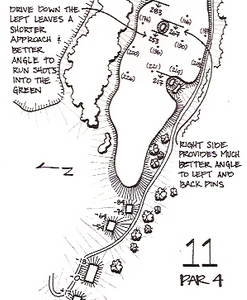
How many times have you hit a ball that looked perfect in the air but ended up flying the green?
How about the number of times it didn’t even make it to the green?
Well, it happens to everyone and most of the time the reason for it is pretty simple; you don’t know your distances. So use some of the tips below and you’ll find yourself pin-high more often than not.
Be Precise – If you’re like most golfers, you probably walk up to your ball in the fairway, look for a yardage stake and just guess how far away you are. And when you do this, you’re setting yourself up for failure.
Two or three yards can be the difference between a penalty and a 6-foot birdie putt so understanding exactly how far away you are is crucial to putting your ball in a good spot. You hear players all the time say, “I know I hit my 9-iron 130 yards”, but that’s far too general of a statement if you ever want to become a better player.
You should know exactly how far you hit every club in your bag with a full-swing and with a half-swing, and if you can’t remember all of your yardages, write them down on a piece of paper and put it in your golf bag. So the next time you’re out playing, you can pull out that piece of paper and see which club you need to hit.
Understand the Wind – Even the slightest of breezes can have a drastic effect on the flight of your ball. A simple rule of thumb is to take one extra club for every 10 mph of wind in your face (take one less club for every 10 mph of wind at your back). It’s also important to realize that what the wind is doing at ground level is not necessarily what it’s doing up in the air. If you watch professional golfers, they frequently look at tree tops to determine what the wind is doing above the ground. So unless you plan on a hitting a thin screamer that never gets higher than six feet off the ground, don’t assume what you’re feeling is what’s actually happening.
Look for Changes in Elevation – There are very few golf courses that are completely flat. Even golf courses that look flat have hundreds of drops and rises all over the place and though it can be difficult from time to time, you have to try to identify where they are. A 10-foot rise on a 200-yard shot is barely recognizable to the eye but it can easily rob you of four or five yards of distance, so be sure to take it into account.
Temperature – To be put quite simply, your ball won’t go as far in cold air. For every 10 degree drop in temperature (Fahrenheit) your ball will fly anywhere from two to three yards shorter. So your 9-iron distance in the middle of June isn’t the same as it is in October.